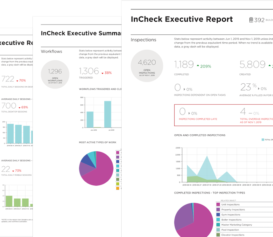If you’ve ever attended a SiteCompli in-person event, you’ve probably heard me say this storied phrase:
“Feedback is a gift.”
This simple yet elegant saying has carried us SiteCompliers through client requests and suggestions, intra-team discussions, and more. It’s an important reminder for us to use feedback as a forward propellant – as intel to solve challenging problems and bring more value to folks we’re trying to help.
That’s just not important for tech teams like ours – all teams, including property operations organizations, can use feedback to help improve their businesses and their bottom line.
While you’ve already got a lot on your plate, the value feedback can provide to your organization is immeasurable. That’s why we’ve gathered a few tips on how your team can kick off a feedback plan with minimal effort.
To start, let’s talk about the feedback loop.
What’s A Feedback Loop?
A “feedback loop” is exactly what it sounds like – a mechanism for you to solicit feedback from various groups, and then implement information from that feedback into your work.
In order to establish a loop, you’ll need to think about two simple things: how can we collect feedback, and how do we evaluate and implement that feedback?
In order to get the full benefits of feedback, it’s important that you think about it as a loop. Collecting feedback without implementing it could be a waste of time and effort. And making big process changes without having insight into what your residents, tenants, or staff think might be a huge challenge.
With that said, here’s some ideas on how to start your property operations feedback loop with intel from two key groups – your clients, and your staff:
Soliciting Tenant and Resident Feedback
Most of the feedback you’ll collect comes directly from the folks you help – your tenants and your residents. And since you’re already interacting with them frequently, soliciting feedback can be really simple and straightforward.
Want to save time? Automate your feedback requests. After a repair job or project is finished, have your property operations system automatically trigger a “client feedback” workflow. It can include an instant follow-up email with a satisfaction survey, a call from a manager, or even a check-in inspection to ensure the client is still happy with the resolution. Making this a part of every work process automatically will make gathering feedback second nature – and provide your team with tons of valuable intel.
What if you don’t have time or space for post-work follow-ups? Implement feedback questions directly into your work. For example, make the last step of every inspection record or maintenance log a star rating for “tenant feedback.” It’s a small and simple way to get feedback without adjusting your entire process.
You can also have specific feedback processes for different kinds of work. For example, sending a survey or making a call to every new resident could be a great way to start a positive relationship post-move.
One big positive effect of getting tenant/resident feedback directly? Eliminating the urge for folks to post on external third-party review websites. In fact, you can even turn this around in your company’s favor – for every positive piece of feedback you receive from a resident, automatically send them a thank you note with a request & link to leave their kind words on an external site. Reinforce positive thoughts with positive thanks, and drive your reviews through the roof.
Finally, “closing the loop” with tenants and residents can be as simple as sending an email when work is completed, or notifying someone that their feedback will be implemented or considered going forward. Even if you don’t adopt tenant or resident suggestions, following up and thanking them for their thoughts makes a big difference.
Getting (And Implementing) Staff Feedback
Clients aren’t the only people who can provide impactful feedback. Your staff has front line experience carrying out critical work and processes, and can share tons of data about what’s going well – and more importantly, what’s not. So if a step within a make ready is taking too much time and delaying turns, your team’s feedback can help improve the process and ramp up turn times.
While feedback can be casual (sent as needed, or given during 1:1 meetings with your team), structuring the way you collect feedback can help you get more, better quality information. There are a few ways you can do this:
- Make it a part of your ongoing processes – send an automated survey to your team asking them for feedback each year, quarter, month, or other working period.
- Institute “retrospectives” for large projects – gather your whole crew for a post-project critical review: vendors, teammates, whoever is involved. Need more intel on holding a good retrospective? Check out our blog post here.
- Check the data! The proof is in the pudding – checking data on how your team is performing (speed of work completion, percentage of work completed within a workflow or project) is a great way to collect actual feedback without even asking for it. InCheck users can review team performance with the Executive Summary on-demand.
Once you’ve collected feedback, you can make simple tweaks to your current standard operating procedures to make them even more efficient. For example, adjusting the number days between move-out inspections and repaints. Or increasing boiler checks from quarterly to monthly to prevent expensive surprises.
Feedback doesn’t have to be daunting or exhausting – small, brief steps built in automatically can get you tons of information, and make a huge difference to the way you run your buildings.




